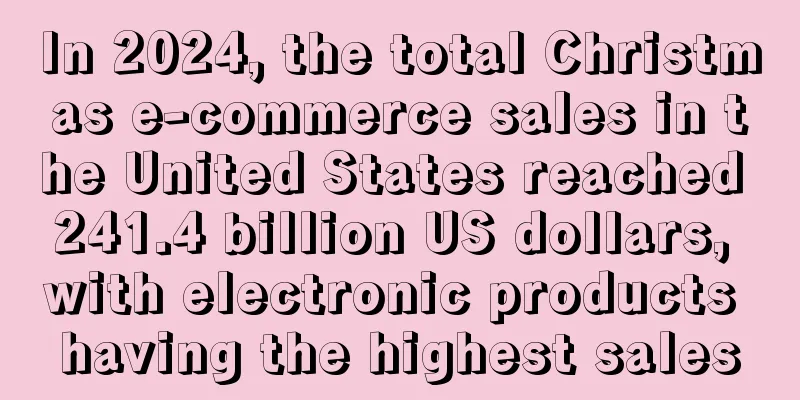The conflict between Russia and Ukraine has triggered an inflation storm. Six major changes are taking place in US consumption

|
It is learned that according to foreign media reports, the outbreak of the Russian-Ukrainian war has interrupted the US economy's recovery from the COVID-19 epidemic. In addition to increased energy and manufacturing costs and the impact on consumers' budgets, it has also led to a decline in online spending and a shift in consumer behavior. The conflict has led to supply chain disruptions in all walks of life around the world. E-commerce website traffic has declined According to a report by Similarweb, desktop conversion visits to the top 2,251 e-commerce websites in the United States fell 6% year-on-year in May this year. Recent survey results from McKinsey show that consumer spending fell year-on-year for the second consecutive month in May 2023. In addition, a survey of 2,507 participants found that 43% of consumers saved more money than in the previous year. At the same time, 87% attributed the reduction in additional spending to inflation. Inflation makes it harder for the elderly to spend There are significant differences in consumption behavior between different age groups during inflationary periods. Young consumers, especially Generation Z, are less affected by the cost of living crisis. This is attributed to many factors, including smaller family size, living with parents to save on rental expenses, etc. In contrast, rising prices have a greater impact on older people. This is because they tend to have large families of three or more people. The survey results show that 46% of "Generation Z" Americans said that their disposable income has increased from the previous year. In contrast, only 27% of consumers aged 55 and above reported the same. Fashion, auto parts, and beauty categories have rising demand, but user stickiness is not high Consumer behavior has changed across industries as a result of inflation. According to a report by Similarweb, fashion retailers, automotive parts suppliers, and cosmetics and beauty retailers have seen an increase in “converted visits” year over year. Similarweb noted that the increase in car parts purchases shows that consumers want to reduce repair costs by doing it themselves. However, even as consumers' purchases from fashion retailers increased, brand loyalty to fashion brands continued to decline. This highlights the need to establish brand loyalty programs to attract and retain customers. In addition, the number of converted visits in the travel and experience industries has also increased year-on-year. Among them, travel has increased significantly by 62%, while cruises and tickets/activities have increased by 23% and 8% respectively. In contrast, industries such as restaurants, eateries, and food delivery services saw a significant drop in conversion visits due to rising food prices. Similarly, consumer interest in financial services and consumer electronics also declined. DTC website traffic is on the rise
Despite the challenges, there are still opportunities in the market. For example, the direct-to-consumer (DTC) channel has received positive feedback, and in May, the sales of high-tech home appliances DTC websites exceeded those of e-commerce platforms. During the same period, the number of converted visits to sportswear brands fell by 35% year-on-year, but their DTC websites grew by 27%. Consumers seeking to save money buy replicas or imitations Consumers are also adopting strategies such as exploring cheap alternatives or easy financing options to cope with the rising cost of living. An emerging trend among Gen Z consumers is looking for inexpensive replicas or imitations of well-known items. Notably, this trend has been very strong on TikTok. As of early May 2023, the #dupes tag on TikTok generated more than 2.5 billion impressions. This led to a 9% year-over-year increase in traffic to the top 100 beauty sites. Private label and BNPL continue to be popular Additionally, consumers are increasingly accepting retailers’ private labels because they are cheaper than domestic brands. Recognizing this opportunity, Amazon has launched a range of private labels across a variety of categories. Despite the rising cost of living, "buy now, pay later" remains popular among American consumers. In May, visits to the airline's "BNPL" sector increased by 64% year-on-year. This shows the strong desire of American consumers to continue traveling with flexible payment methods. Reports say that concerns about a possible recession in the U.S. still linger. The future success of the e-commerce industry depends on its ability to identify and capitalize on new trends. It is critical to understand customer behavior and know that opportunities still exist. Editor ✎ Nicole/ Disclaimer: This article is copyrighted and may not be reproduced without permission. |
<<: Amazon and Walmart compete head-on in beauty and cosmetics market
>>: Temu sues Shein in the US, alleging it violates US antitrust laws
Recommend
How does Amazon’s “philanthropist” reject internal circulation?
The full text has 1862 words and takes 8 minutes ...
What is Love Bonito? Love Bonito Review
Love Bonito is a Singapore women's clothing sh...
The strongest audit in history? Amazon starts a new round of account verification
In recent times, the "destined people" w...
All sellers on the US site have 0 orders! Is there a bug in the Amazon system again?
▶ Video account attention cross-border navigation ...
What is E-Tek Safe Accelerator Browser? E-Tek Safe Accelerator Browser Review
Edecker secure browser is designed to help sellers...
What is Geoswift? Geoswift Review
Geoswift Group, founded in Canada in 1998, is one ...
State Council: Small and medium-sized enterprises are exempted from three social insurance taxes for five months
The social security issue that small and medium-si...
Amazon is cracking down! ! You should know these "restricted areas"
Let's talk about something happy, today is Fr...
What is Shopbop? Shopbop Review
Shopbop is a fashion shopping website founded in 1...
[Urgent] Amazon cuts off the brand accelerator! And launches a new plan that will never close stores?
Yesterday, a seller friend in our Damai Circle bro...
What is SGS? SGS Assessment
SGS is headquartered in Geneva, Switzerland. SGS i...
What is Turing Search? Turing Search Review
Turing Search is a foreign trade marketing and cus...
How to quickly improve keyword rankings? These methods can improve 150%
"The product is obviously not priced high and...
Amazon FBA is causing trouble again? A large number of sellers received performance warnings
2025 has just begun, and Amazon has started to &qu...
Instagram Shop may introduce advertising features! Currently in testing
<span data-shimo-docs="[[20,"获悉,近日Instagra...









